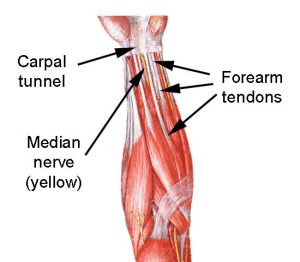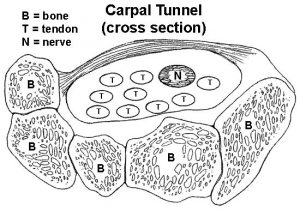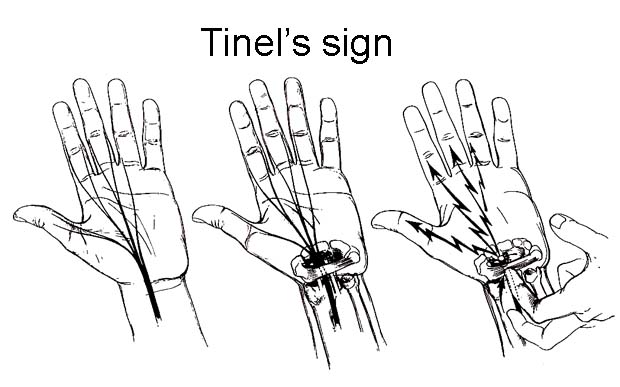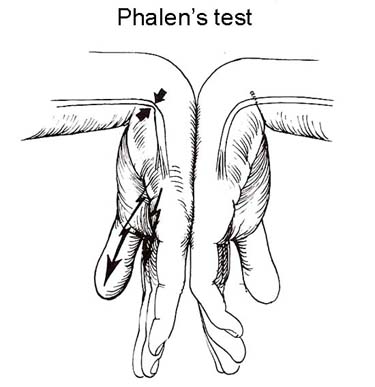This syndrome involved pain and numbness from a nerve that is compressed as it goes through an area known as the carpal tunnel. The carpal tunnel is a region of the wrist on the palm side where the tendons go through a tunnel on their way to the hand. Along with the tendons which go through this tunnel-like space, there is also a nerve, called the median nerve.



In the diagrams above, the carpal tunnel is the space under the transverse carpal ligament, which forms the roof of the carpal tunnel space. The walls and floor of this tunnel are formed by the wrist bones. Nine tendons and their surrounding synovium (gliding membranes) and one nerve (median nerve) pass through this tunnel. When the median nerve gets compressed or inflamed, symptoms can occur which include numbness and/or pain in the areas supplied by the median nerve. If the median nerve is irritable, numbness and pain symptoms can be reproduced by tapping on the nerve. This test is called the Tinel’s sign.


Carpal tunnel syndrome is more common in patients
who do repetitive work, who have diabetes, thyroid disease, obesity, and also occurs more commonly during pregnancy.
Carpal tunnel syndrome can be confirmed with electodiagnostic nerve tests, although sometimes these tests can be falsely negative.
Non-operative: rest, splinting, anti-inflammatory medications, injections Operative: carpal tunnel surgery (the transverse carpal ligament is released), usually an outpatient procedure. Afterward surgery, the dressing from the hospital is kept on for about a week, then a wrist splint is worn for an additional three weeks.
